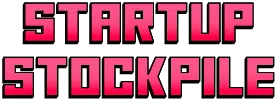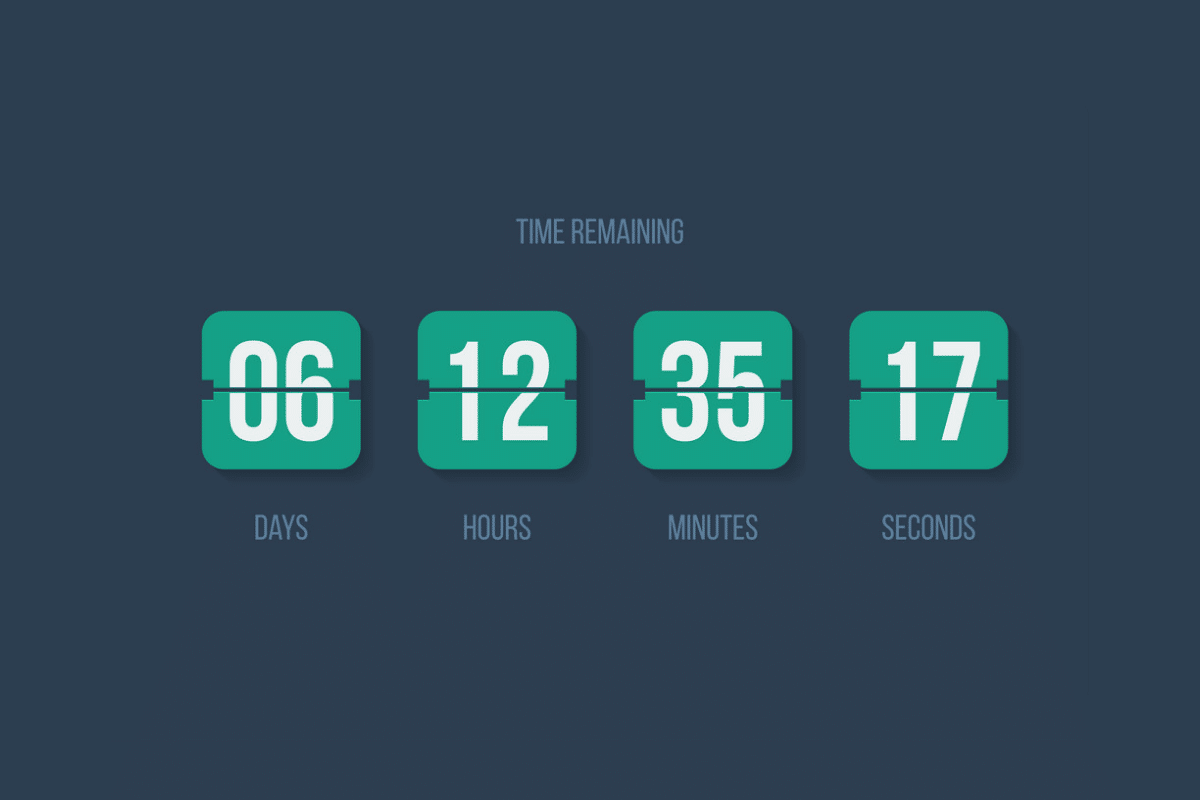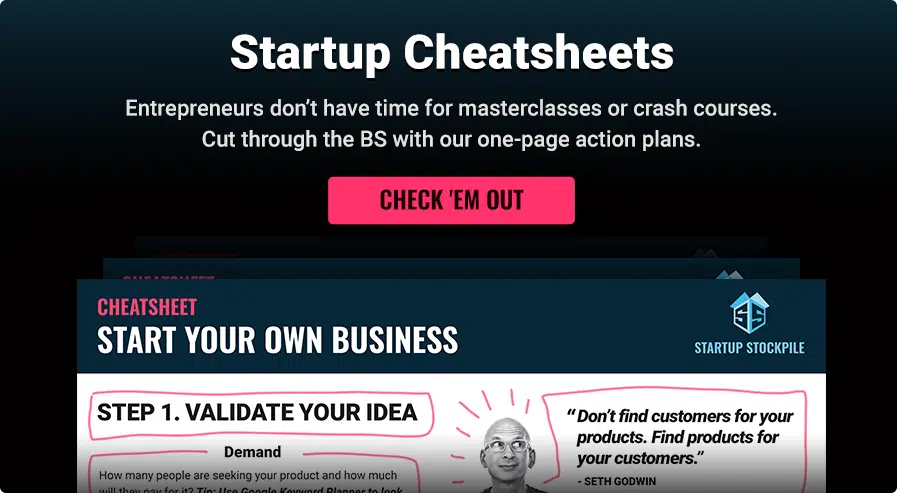Even in a world of texting, DMs, and live chat, email is still one of the most effective ways to reach your customers, build awareness, nurture leads, and make sales.
In this post, I will walk you through the key elements you need to build a successful email marketing campaign using the secret sauce FOMO. But before we do that, let’s review what we will cover.
What we’ll cover
- Understand user behavior
- Analyze who you’re writing for
- Identify the value you can provide your audience
- Structure your email sequence
- Create personal FOMO deadlines
1. Set A Goal With User Behavior In Mind
When you start planning your email marketing, the first thing you need to do is set a goal.
And you might have several goals, such as:
- Product awareness
- Education
- Purchasing
- Using your product
- Referral
To achieve any goal you set, you need your subscribers to take action on the offers you make. Understanding user behavior will help you better plan and position your offers.
One of the most popular frameworks for understanding user behavior is the Fogg Behavior Model:
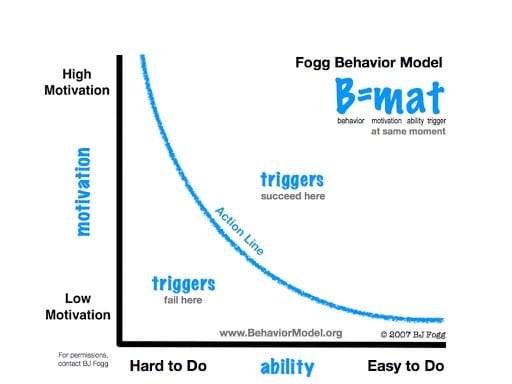
Behavior can be broken down into three parts: motivation, ability, and triggers.
Motivation
Motivation represents people interested in taking action on one of your goals.
As an example, let’s imagine you’re selling an online course about “How to Learn Piano in 30 Days.”
If your subscribers are not interested in learning piano, then they won’t be motivated to open your emails, purchase your course, or share it with their friends.
Ability
Ability looks for “people who can take this action.” If the course costs $99 and your subscribers don’t have $99, they can’t purchase it.
Since your course is about playing the piano, if they don’t have access to a piano… then there’s no ability to move forward with that behavior.
Triggers
Triggers are the last layer, and a trigger takes a group of motivated people who can do something, encouraging them to do it now.
2. Know Your Audience
Now that we’ve figured out what causes people to take action, we need to look at who these people are!
In your email marketing, you’ll have a few different groups of people (at least!) you’re writing emails for.
Here are a few examples:
- New subscribers
- First-time buyers
- Repeat customers
- Non-buyers
- “Dead” email subscribers
Drip – a popular email marketing platform – provides a great list of example workflows you can use for different segments of your audience:
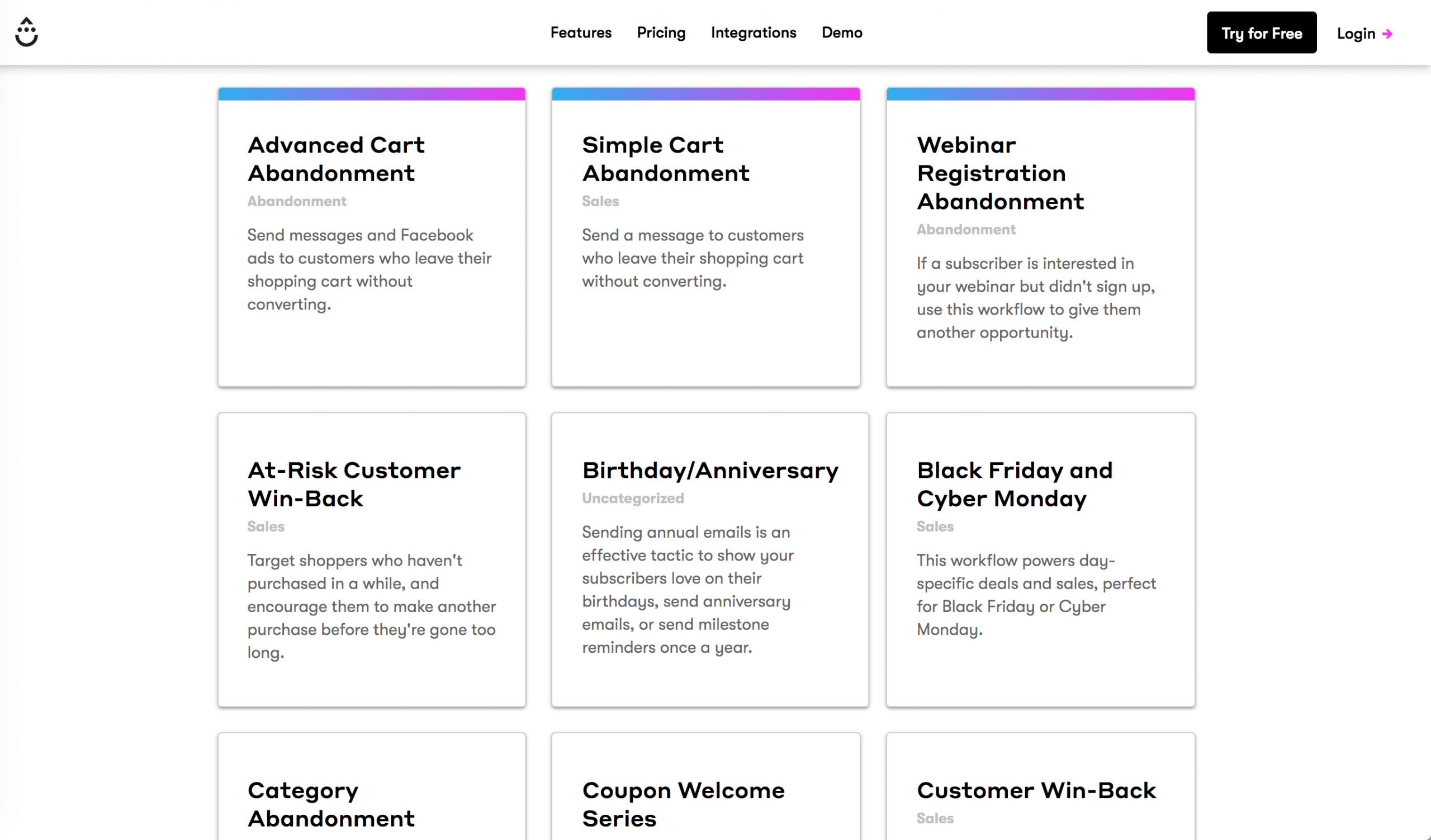
And the easiest place to start is with new subscribers…
3. Provide Value To Bew Subscribers
The emails you send to new subscribers in the first week after they opt-in will frame the rest of their experience with you, your products, and future marketing.
Focus on improving your email marketing for new subscribers, and you’re setting the stage for success everywhere else!
When I first subscribed to the Beardbrand email list, they sent me an email a day for the first week after I subscribed:

It’s a free one-week mini-course on all things beards!
Here’s a sample from the first email:
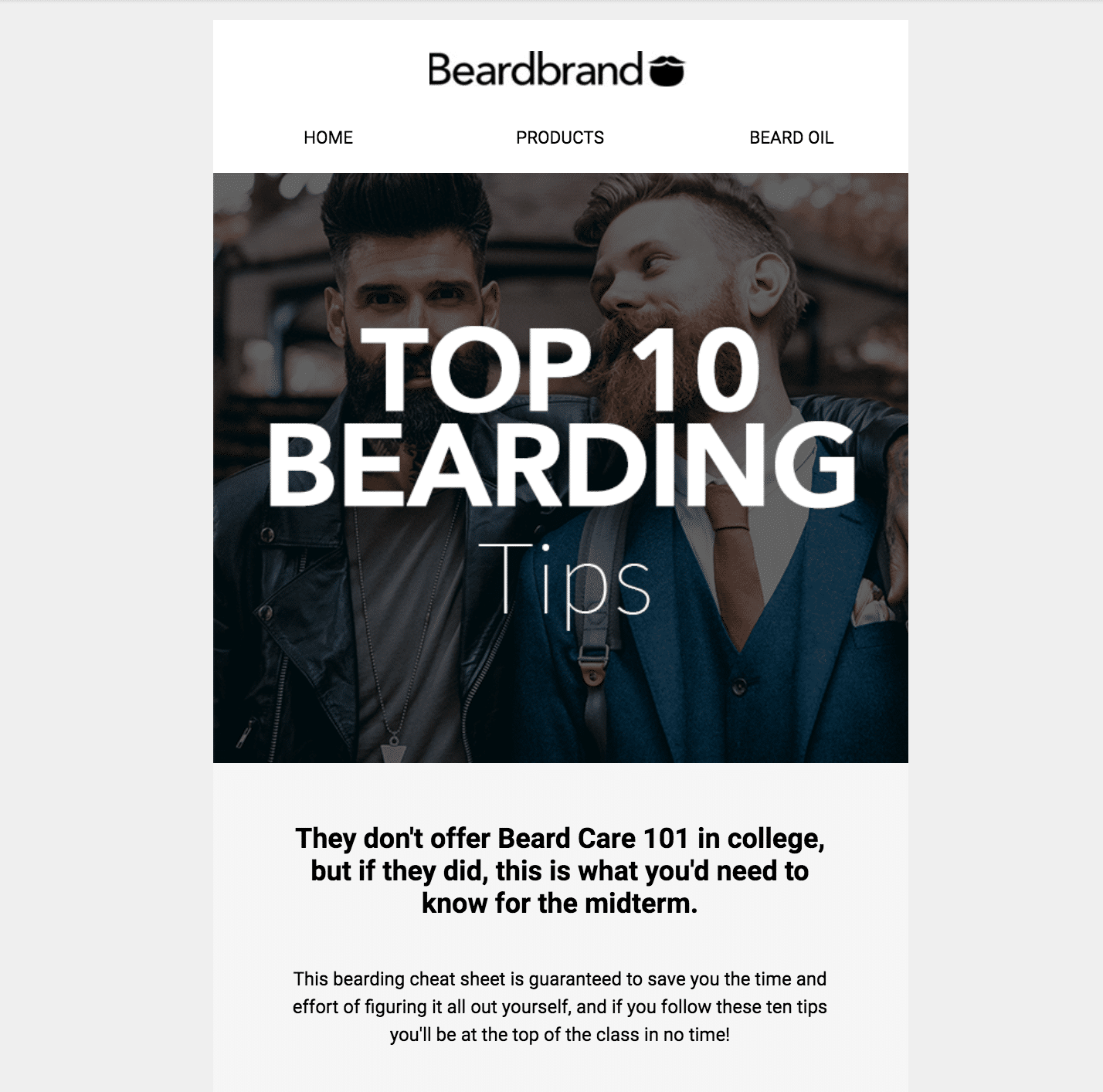
Beardbrand is over-delivering on content… beyond what I had expected when I gave them my email address.
And now that they sent me through this welcome sequence, I trust them a lot more because they invest in educating and building trust before trying to sell me anything.
Remember how motivation was the first part of the behavior model?
Over-delivering through education and entertainment is one of the best ways to motivate your audience to purchase from you in the future.
Keep in mind… you don’t always need to create new content for these emails. You can often start by repurposing existing content – blog posts, videos, webinars, podcasts, courses.
4. Strategically Structure Your Email Sequence
This is a template that our team uses as a starting point for new subscriber sequences that we build:
| Day 1 | Welcome |
| Day 2 | Killing the “sacred cow” |
| Day 3 | Problem, agitation, solution |
| Day 4 | The story, more details |
| Day 5 | Story, more details |
| Day 6 | Expires tonight |
| Day 6 | Reminder |
| Day 6 | Last call |
| Day 7 | Feedback |
The first three and a half days are focused on content and education. We introduce a special offer only about halfway through this email sequence.
On days 5 and 6, you focus on presenting the offer’s details, answering common objections, and closing the sale.
Notice how, on day 6, we sent out three different emails. This is important! Don’t hesitate to send multiple email reminders about your offer on the last day.
Adding multiple emails on the last day of your offer can dramatically increase your email conversion rates. Most of the time, your subscribers must be reminded a few times about what you’re offering and when it will expire!
Finally, on day 7, you can send an email either congratulating them on their purchase (with info on the next steps), or if they don’t buy, you can send them a quick survey asking for their feedback.
5. Create Personalized FOMO Deadlines
So, let’s talk about creating personal deadlines for your subscribers that create a sense of FOMO.
The term “FOMO” means “the fear of missing out.” A psychological bias humans have creates anxiety about missing an opportunity.
Having an authentic deadline built into your offer is one of the most effective ways to increase conversions because it creates a sense of FOMO.
So, how do you set up a deadline unique to each person opting in?
We’ve built Deadline Funnel for this reason – to help you add authentic urgency to marketing. It integrates with almost every landing page builder and email platform, and thousands of marketers use it to increase conversions.
If you don’t want to use a platform like Deadline Funnel to manage your evergreen campaigns automatically, here are some other ideas for adding deadlines to your email marketing:
- For new subscribers, offer a special bonus if they purchase your product within a week of signing up for your email list. Then, ask them to forward their receipt showing when it was purchased to you.
- Create a product launch campaign – manually send out the email sales sequence and take your special offer page down at the end of the promotion.
- Once you run your first product launch, please set up a monthly process to send it out at the beginning of each month for anyone on your list who hasn’t purchased it.
When you bring each foundational element together – user behavior, understanding who you’re writing for, delivering value, creating a structured offer sequence – and layer a personal deadline – you’ve created your first evergreen marketing campaign!
And from there, you can focus on increasing traffic and optimizing your campaign for even more conversions.
Editor’s Note: The article is part of the blog series Grow Your Business brought to you by the marketing team at UniTel Voice, the virtual phone system priced and designed for startups and small business owners.
